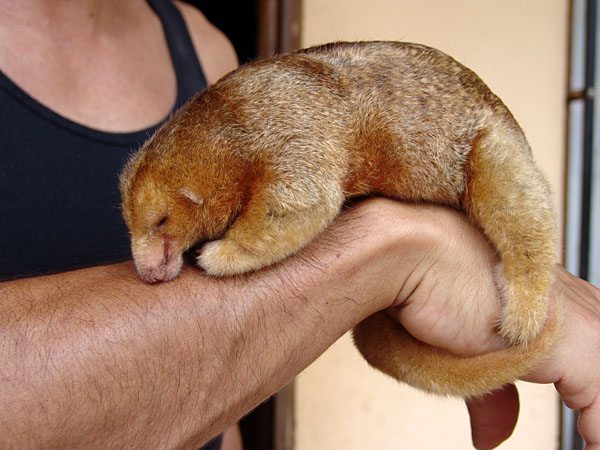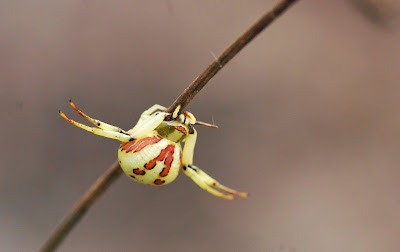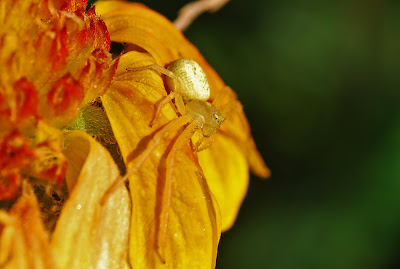Figured it out yet? That's right, today we're going to take a look at anteaters. Now I know
Silky Anteater / Pygmy Anteater - The smallest member of the anteater family. These guys are the only species in their family branch on the proverbial evolutionary tree! They also don't eat just ants, though those do form the bulk of their diet. They also only live a couple of years at most, and can be found in or around Central America.

source

source

source


source
Giant Anteater - Moving from the smallest to the largest of the species, the Giant Anteater actually lives around the same general area that the Pygmy Anteater does! They can eat tens of thousands of ants a day, and gorw up to a size of over 7 feet, give or take some. Just the tongue of a fully grown adult can be a foot and a half in length or more. This is one anteater you really don't want to pick a fight with, and where the name antbear definitely starts to apply. Though I don't think they're as cute as their smaller cousins, they're sort of impressively funny looking.

source

source




source

source

source
Southern Tamandua - Hailing from South America, these guys are also known as either Collared or Lesser Anteaters. They're not very big, but they're a lot stronger than they look! Like the Pygmy Anteater and the Northern Tamandua, they're adapted for a lifestyle in the trees. The vest-like pattern they have also changes depending on where they come from.

source
source

source
source
Northern Tamandua - While these guys might look similar to their southern tamandua relatives, they're really not the same! They're slightly smaller, live to the north (bet you never would've guessed) and have a much more distinctive and easy to spot vest pattern compared to the Southern Tamanduas. They are, though, every bit as cute as the others. Let's take a look at them!

source


source

source

source

source

source
That's it for anteaters, though! But on to the spider of the day-
It's the crab spider! Named because people thought that they for some reason resembled crabs due to the way they held their front two claws out, these spiders are smart little hunters. Don't let the fact that they're brightly coloured fool you- this just lets them blend right into flowers, and they're definitely useful in keeping the amount of garden pests and insects that would damage the plant down (though okay, they also eat bees, but you can't really blame them for that). Because of the flower thing, they also tend to come in all sorts of pretty patterns and colours. Let's check out a few!

source

source

source

source


source

source